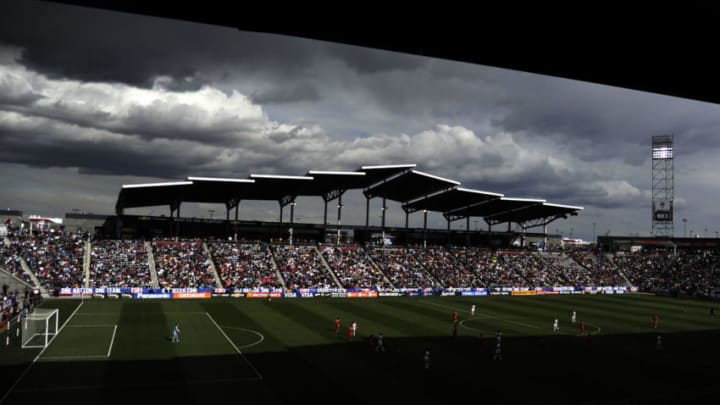Why do so many stadiums begin by digging a deep hole? That includes soccer-specific stadiums. This question arose among readers during a flap.
The readers had a problem when it was announced here that the below-ground stadium in Qatar, called The Wall, wouldn’t get built. The halt means – media reported and I regurgitated – among the world’s stadiums, the only underground structure wouldn’t happen.
But soccer stadium aficionados reported a problem to me when media reported The Wall as the world’s lone underground stadium. Many stadiums start with digging a hole, they said. Really deep holes. They are all underground stadiums, is the point. And that’s right!
But why? Why design stadiums beginning with a hole?
Talking with HOK, global design, architecture, engineering and planning firm, there’s a basketful of logical reasons for building a stadium under street level, or below grade. HOK’s Managing Principal Chris DeVolder and Senior Project Designer Peter Broeder speak with extensive experience in stadium design.
They worked about two years with USL to establish league-wide stadium guidelines. They are working on new stadiums for Louisville City and Charlotte, and have worked on college campuses.
Yes, there remain some stadiums that start at street level, or grade, and build up. In latest design, Sacramento Republic FC’s MLS stadium, if built, would be at grade. DeVolder and Broeder point to Columbus Crew FC’s stadium. Also at grade.

The new NFL Las Vegas stadium for the Raiders begins with a 20-foot hole. The idea is to get half the folks walking up to their seats and the rest walking down. Construction has started, with fan experience in mind.
‘When you’ve got a facility with 40,000 people, the easier you make it to get to their seats, the better,’ says DeVolder. ‘From a fan experience perspective, it’s not as preferred if you have to go up 30-40 rows; instead of 50% below grade and 50% above grade.’
With many of these designs, fans first arrive at the concourse, full of opportunities to enhance their experience with refreshments and sports-themed items.
‘During the event, it helps facilitate the concourse atmosphere, making it really desirable,’ Broder explains. ‘The advantage of these structures is accessing the concourse on the street level – the vast majority of the stadium population arriving at concourse level.’
The fan experience translates across events. That’s important, as stadiums today must serve a variety of purposes.

There are even some extreme stadium examples where fans enter the structure at the top of the seating bowl. Those MLS stadiums include Dick’s Sporting Goods Park in Colorado and Toyota Stadium in Frisco, Texas.
Building the stadiums below ground has another advantage not as evident to fans. DeVolder and Broeder emphasize that part of the support structure comes from the ground support.
Michigan Stadium excavation in 1927:
Michigan Stadium excavation pic.twitter.com/vmMtDYtd3c
— Chuck Wharton (@chuckx777) January 16, 2019
‘You don’t have to build as much of a support structure, but you must be aware of your grading,’ DeVolder says.
Ben Hill Griffin Stadium, University of Florida, built in a ravine:
University of Florida pic.twitter.com/n7trSqgOGp
— Chuck Wharton (@chuckx777) January 16, 2019
And there are even sites where not much digging is required. Broeder points to stadiums built in a valley.
So below-ground stadiums exist. Examples abound. And according to DeVolder and Broeder at HOK, this design makes logical sense for a variety of reasons.
Long before The Wall stadium entered planners’ minds, excavators had been digging down for structure and fans. So despite booster’s enthusiasm, it wouldn’t have been the first below-ground, or underground, playing field. But that isn’t the most surprising part.
In anticipation of the 2022 World Cup coming to Qatar, The Wall Stadium would have seated only 11,000 spectators. That’s not usable for a major World Cup event.
